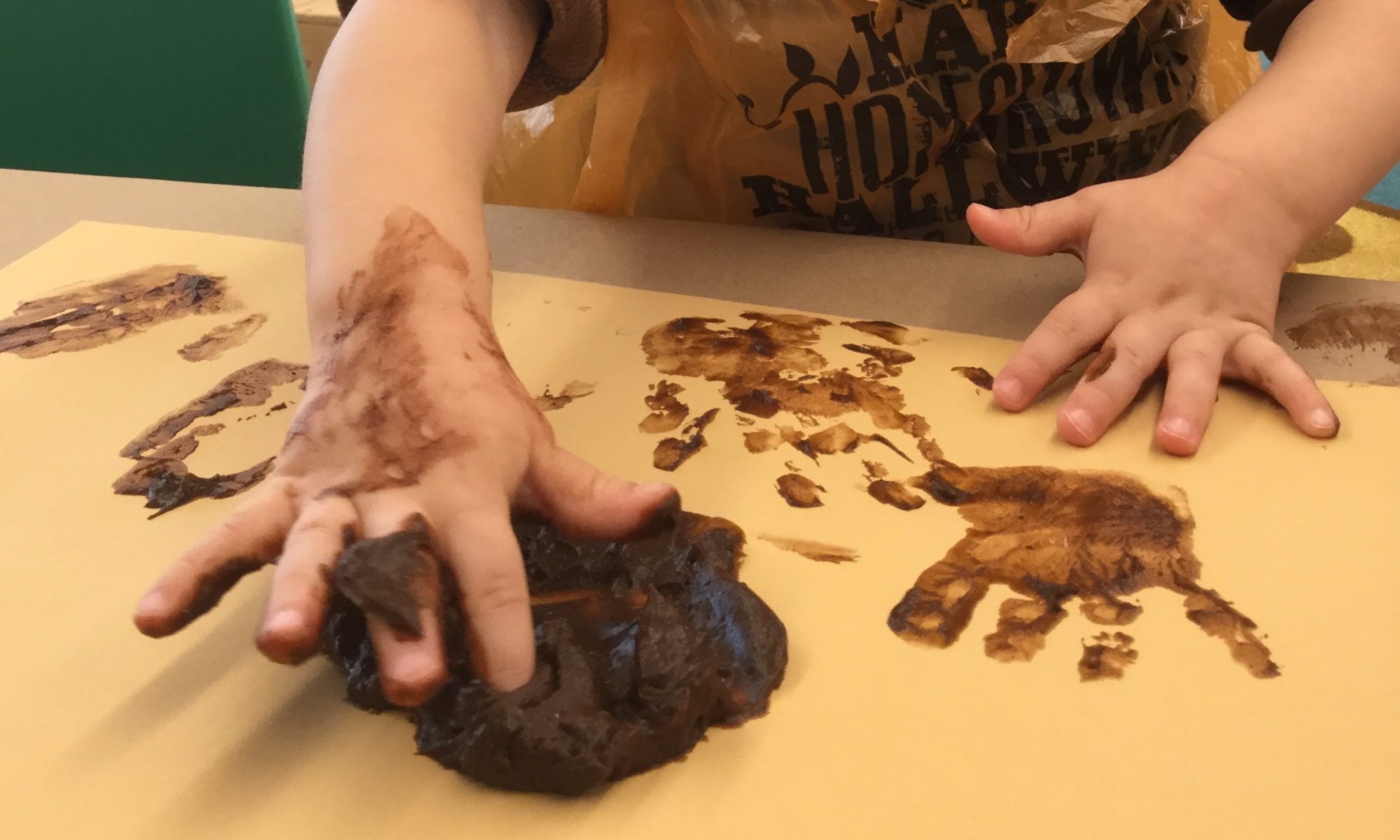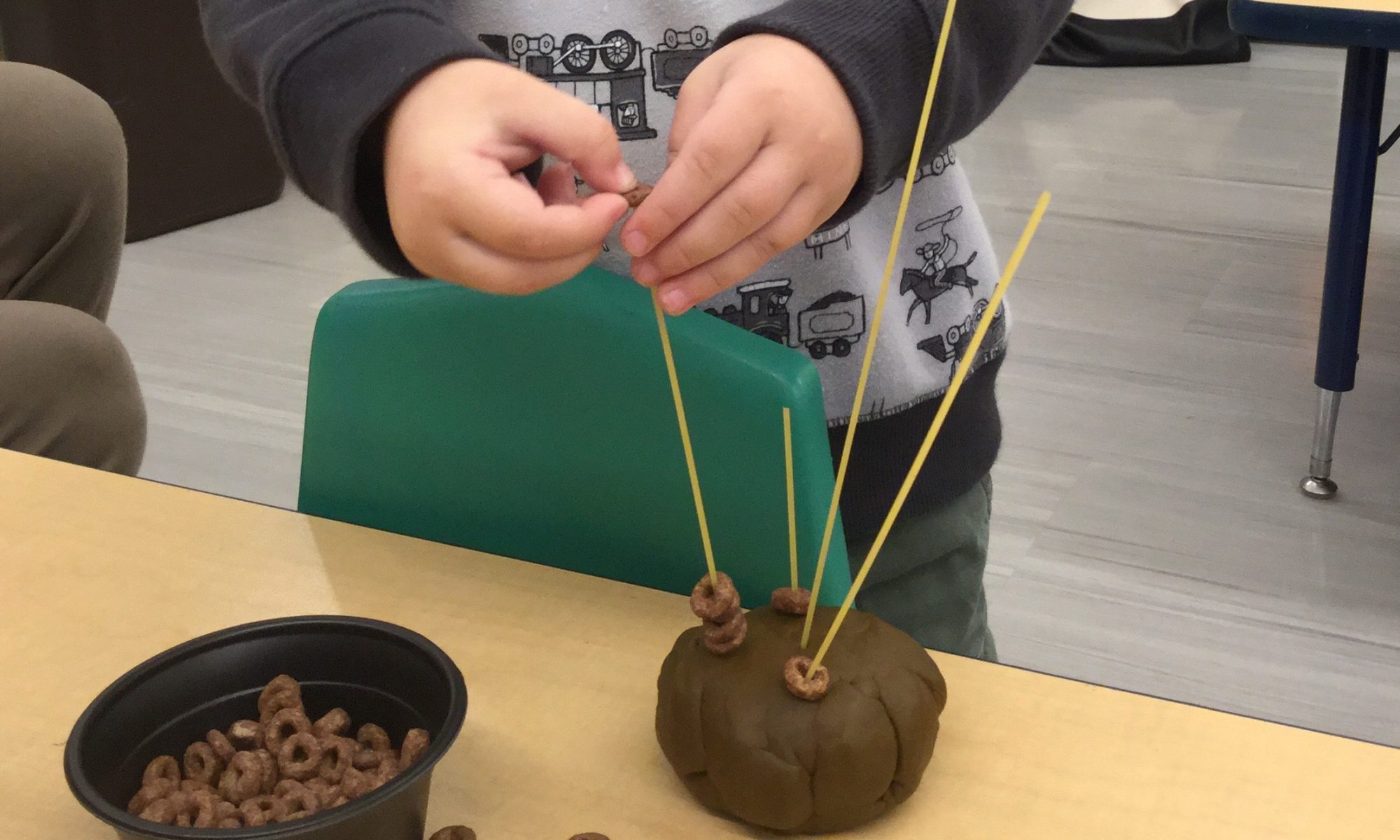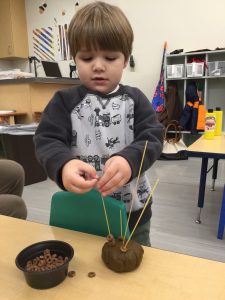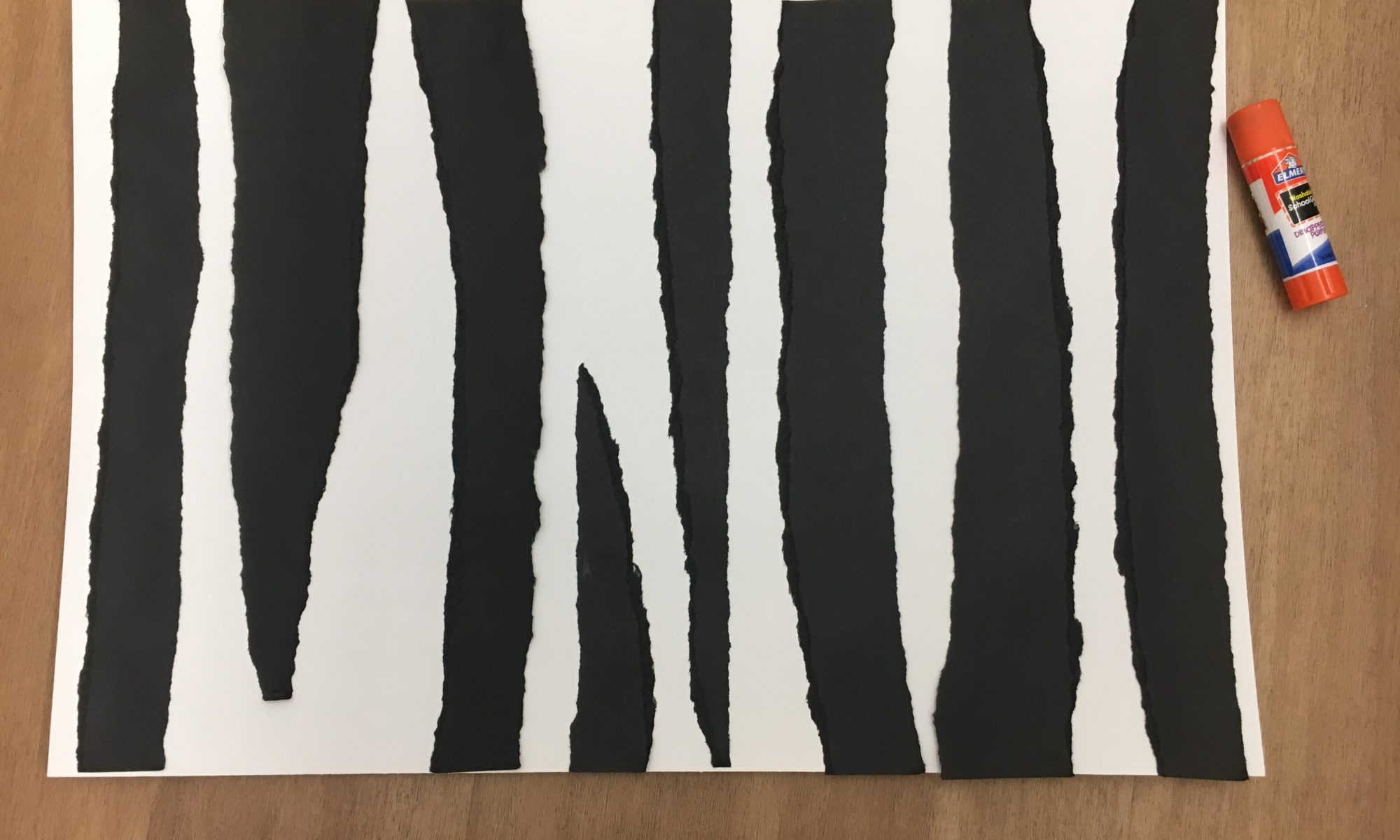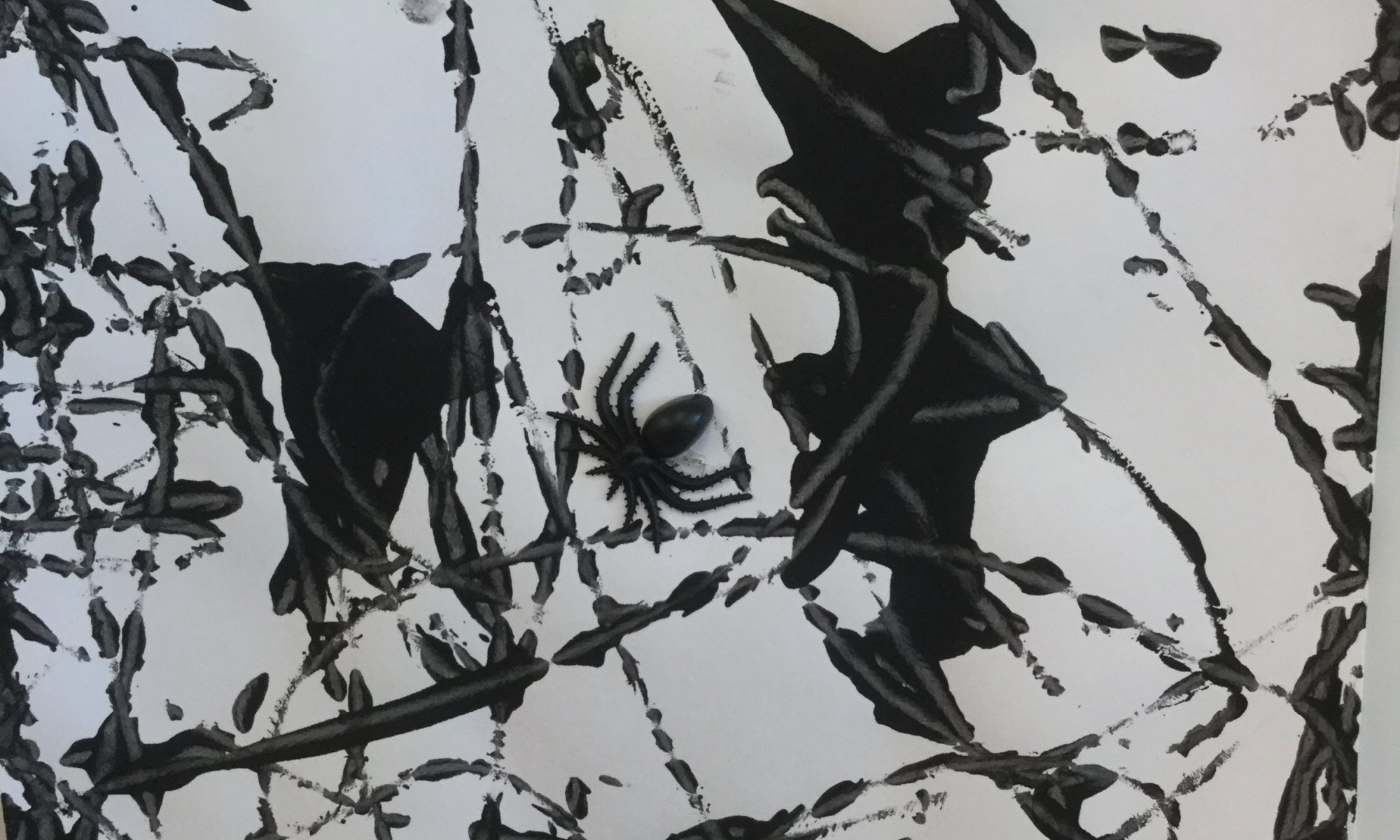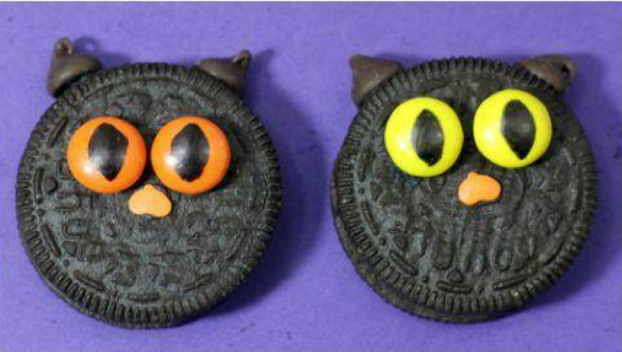Materials
1 box instant chocolate pudding mix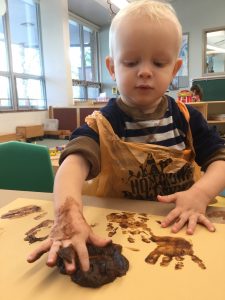
Milk
Large sheet of paper
Paint smock
Directions
Make the chocolate pudding according to the package directions. Put a smock on your child – this is a messy project! (An easy smock to make uses a grocery store shopping bag. Cut the bottom of the bag off. Slip the bag over your child’s head, slipping their arms through the bag’s handles. It covers the majority of your child’s clothing and, when he’s finished painting, you can throw the bag away!)
When you’ve mixed the pudding thoroughly, drop a spoonful of pudding on the paper. Encourage your child to stick a finger in it to feel the texture. “Draw” through the pudding, using both hands. The texture of the pudding is smooth and creamy, the smell is chocolatey, and the best part is licking your fingers when the painting is done! Let it dry as you would any painting.

